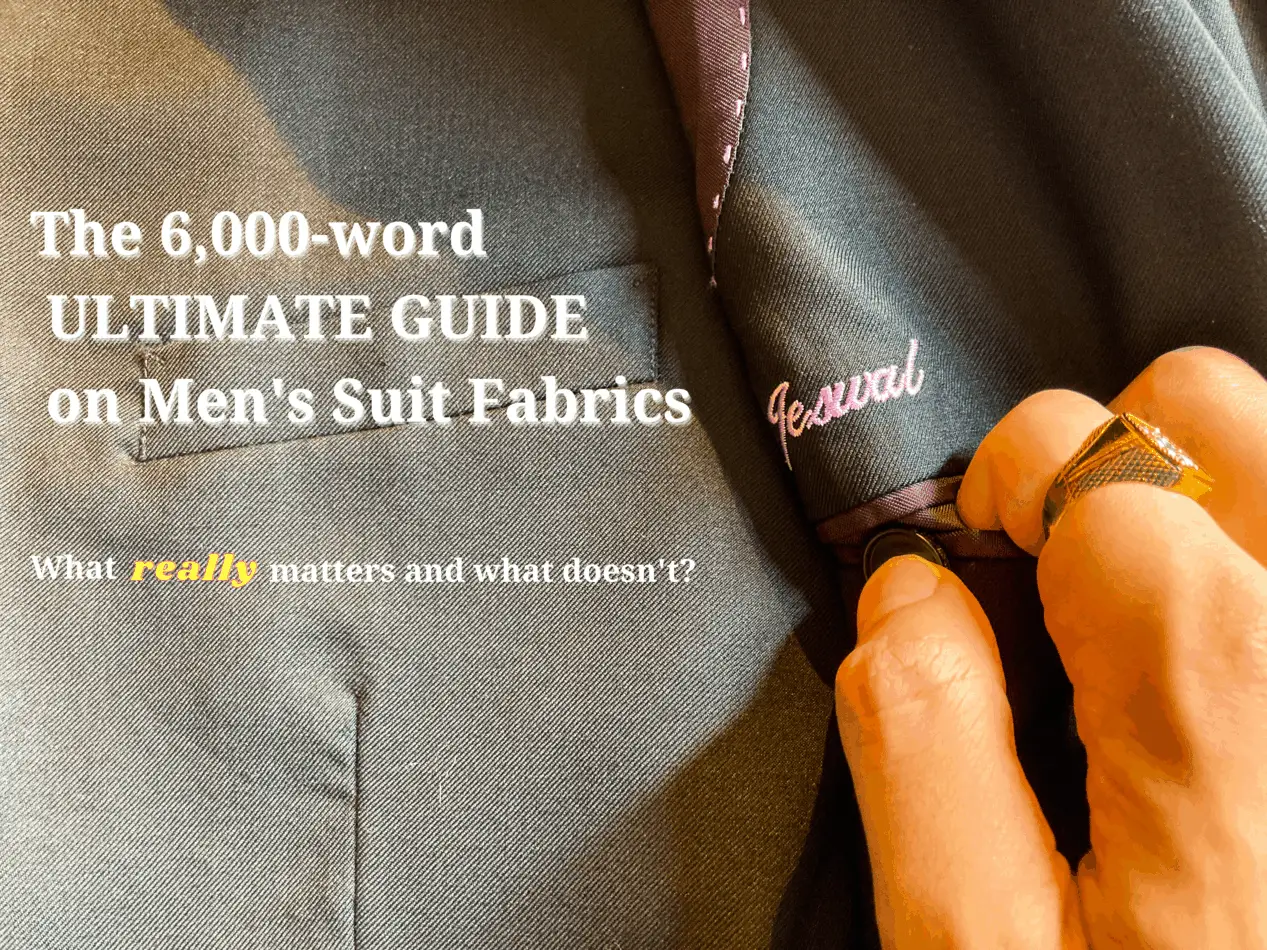There are a plethora of choices when it comes to men’s suit fabrics, but there’s a lot more to consider than just fabric choices, and it can get stressful if you’re a novice, but we’ve got you covered on what to look out for!
Each material has its own properties to look out for, but not all will suit your situation. Understanding what they are will let you know what to expect…
So you’re not caught off guard at the tailors with your “trouser’s down” – if you know what I mean.
What different types of suit material are there?
Fabric can be an expensive thing, fellas…Though the good thing for us is that there are a ton of options to choose from. Below is a list of the most common suit fabrics and what to expect with each of them.
Fabric choices overview:
- Wool
- Linen
- Silk
- Polyester (technically a substance, and from which fibers are made and subsequently turned into textile from the polyester fiber itself.)
- Mohair
Below we’ll get into the gritty details of al the fabrics, their pros and cons, as well as their price points.
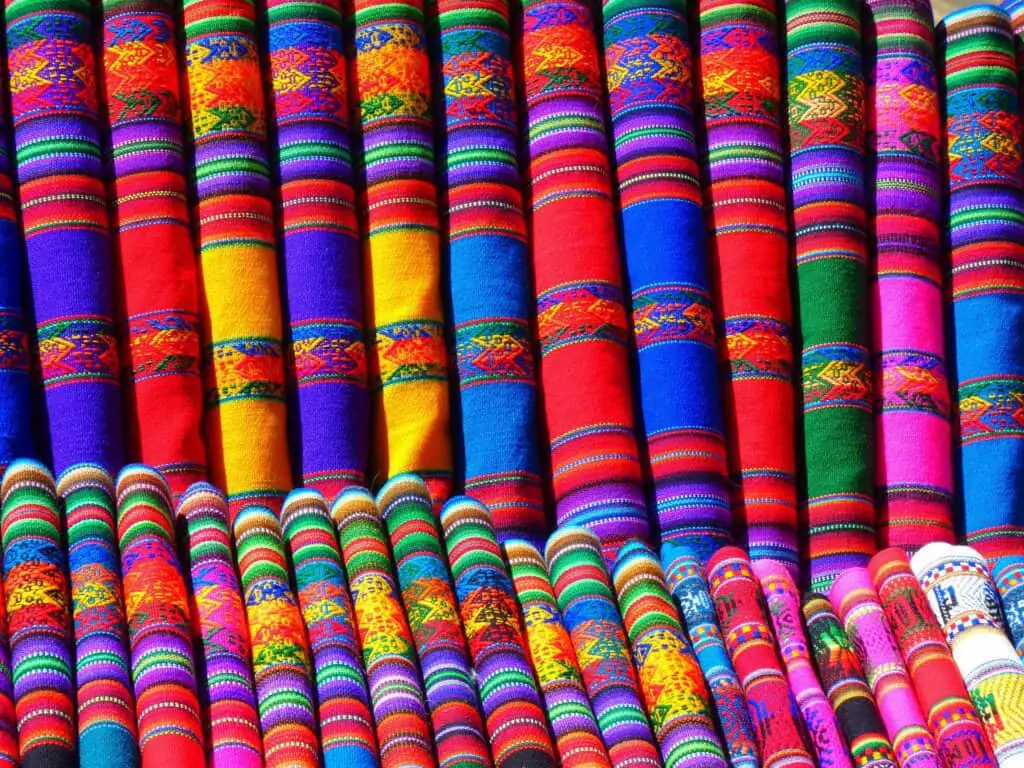
Overview of different types of suit materials
- Wool: The most common fabrics used for suits. Wool fabric has a high breathability factor, resists wrinkling, and is water-resistant. Also, something worthy to note is that wool is flame resistant, ventilates exceptionally, and tailors well.
- Linen: One of my most fav fabrics for shirts, linen is a huge summertime favorite fabric due to its insane breathability, and just overall great relaxed look (in large part due to its wrinkle feature, which only adds to its “casual outing” charm.) It’s a little pricey, however.
- Cotton: Inexpensive, yet as popular (if not more) compared to other fabrics on this list. Highly breathable in nature as well as flexible, for a price.
Cotton tends to crease easily, meaning it’s not the greatest for smart office attire – it also lacks the luxury feel when compared to wool.
- Silk: A fabric comprised of luxury, superior comfort, and money. All-round silk is one of the best and lightest fabrics you can get. Silk is highly breathable and can retain heat in cooler conditions (and vice versa in warmer climates.)
- Polyester: The lowest of the low within the fabric hierarchy. No natural qualities and comprised of synthetic materials. Not breathable in the slightest, creases easily, and has a certain shine to its material that resembles that shoddy “off the rack” tuxedo you wore to junior high prom – i.e. it looks cheap.
- Mohair: What the hell is mohair you may ask? Mohair is a fabric made from the fluff of the Angora goat. Durable as all hell, resilient (wrinkles never), is known for its high luster and sheen, and takes to dye exceptionally well.
Style tip: Aside from a synthetic lining, try not to ever buy a full-on synthetic suit. It lacks breathability and looks cheap – always go for natural fibers. Suits aren’t cheap, so you’re better off just saving up for a good one.
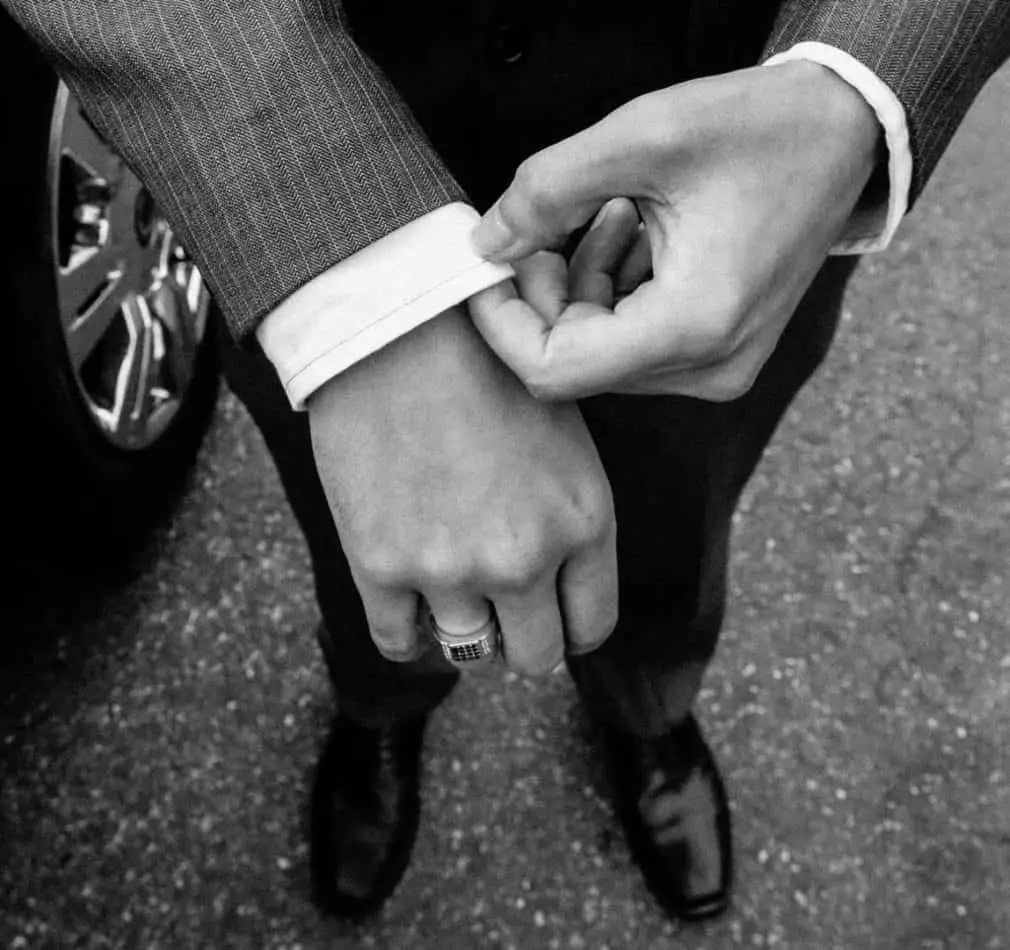
Luxury suit fabrics/the most expensive
It’s probably safe to say, the harder/more “exotic” sounding the name of the fabric is = the more luxurious and pristine it actually is. It’s just simple maths?
You have respectable price tags from fabrics that you’ve probably heard of (linen, wool, even silk), but then you also have an upper echelon tier of fabrics with names you’ve likely never heard of, like:
- Qiviut
- Vicuna
- Guanaco
What’s the fuss over Qiviut fabric?
Qiviut is the downy undercoat of soft underwool fibers that are found upon the fluffy Musk Ox (Muskox) and animals living within the Arctic climate (Greenland, Alaska, Canada.)
This stuff is highly revered for its insulating properties – keeping the musk ox alive in negative 80-degree weather – and is extremely rare due mainly to economies of scale and lack of local mills/animals.)
Remember this fiber is only found on the undercoat of the Musk Ox (meant to serve as a protective element), it’s not exactly part of its “coat.”
Amazing benefits aside, according to modernfarmer.com the price for (raw) qiviut can go for about $35 per ounce (2x the price of cashmere), a scarf can easily start at $275, with a sweater easily ranging near the $1000 mark.
What’s the fuss over Vicuna fabric?
The fibers from the Andes Mountain’s native llama population. More expensive and luxurious than cashmere itself. Vicuna fabric is super fine and super soft, highly inaccessible, and shorn only every 3 years from the wildlands themselves – as I said, they’re expensive.
As of 2007 vicuna fabric can range from $1,800 to a whopping $3,000 per yard. Per kilo Vicuna costs between $399 to $600 – compared to $75-$85 for cashmere. The business of Vicuna wool is worth more than gold.
So in short, lest you wish to take out a mortgage loan to back a suit purchase made from vicuna – just forget about it.
What’s the fuss over Guanaco fabric?
Guanaco is a camelid (camel) native to, yet again, South America.
(What is it with South America and their amazing fabrics?)
Another rarity, Guanaco fabric is considered finer than alpaca, yet coarser than vicuna (about 13 microns thick compared to vicuna’s 15-micron thickness – in this case, vicuna is the chubby one.)
The wool from the alpaca’s little-known cousin guanaco is a treasure-laden trove in its own right, guanaco fabric only comprises about 10-20 % of the animal’s fleece itself, belonging to a group of textile called specialty hair fibers.
A mere two to three pounds of guanaco wool can be harvested per adult (with much of the fur shorn during the Guanaco’s infancy stages), this, along with the painstaking process of downy separation from the rough undercoat contributes to its higher price point.
Simply put Guanaco is a lesser-known fabric than vicuna or merino wool, and the majority of its camels (85% of the global population) reside in Argentina. This, along with tangled economic policies almost guaranteed to ensure you’ll likely never see a Guanaco in your lifetime.
Guanaco fabric can range between $280-$400 per kilo, with a guanaco-made sweater for example currently priced at €410 (available on French-based luxury label Pulu.)
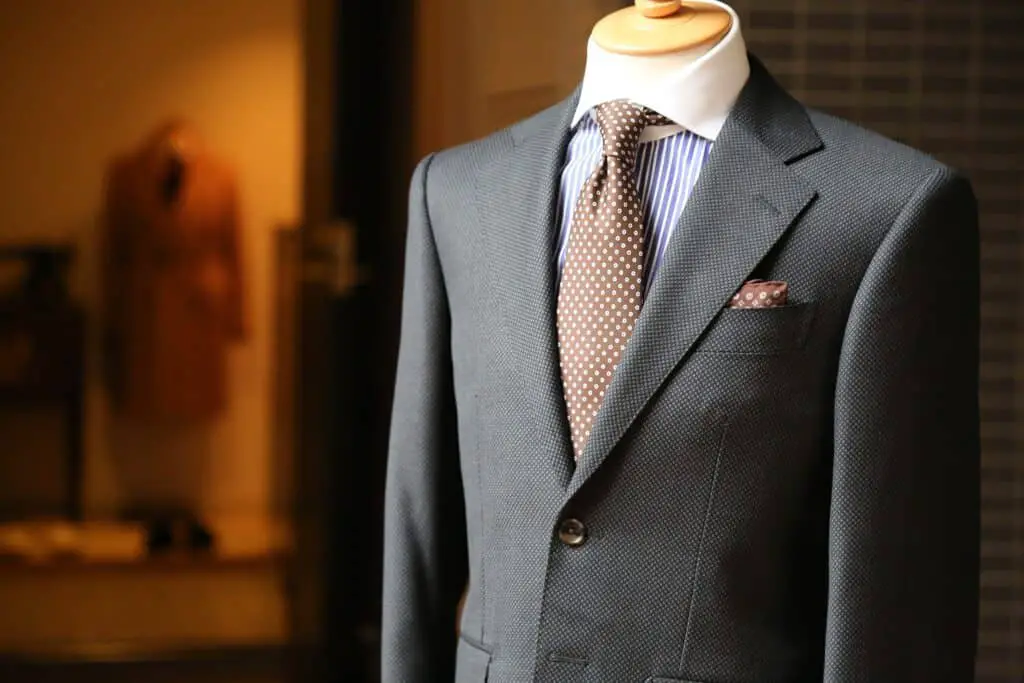
Are synthetic suit fabrics good to wear?
For an efficient suit, you want to ensure the quality and breathability of its material make-up, and this same principle applies to synthetic fabrics like polyester.
A synthetic suit fabric-like generic polyester is not good to wear, as polyester absorbs more humidity/ heat than it releases, and is more hydrophobic (water repellent) than cotton. But polyester can be constructed with natural fibers (eg. linen) to make wicking polyester, which is “satisfactory” at best.
I gave but a glimpse of synthetic fabrics earlier in this post as I’m not the biggest fan of them generally speaking.
While polyester can be manufactured into a technical fabric – weaving hydrophilic fibers into hydrophobic ones, ultimately making the material more breathable -polyester overall is not worth the effort spent making it “suit friendly.”
Polyester fabrics (wicking or otherwise) can also look cheap, and of lower quality than their natural fiber counterparts, and lastly, polyester is a straight-up petroleum-derived fabric, meaning – in short – that it is terrible for the environment.
So ultimately, if you can’t afford a “full natural” suit, you’re better off going with cotton/silk blends over polyester at all, as this will allow you to purchase a suit on a budget, whilst not being a d*ck to the planet.
Win-win.
Style tip: If the above fabrics don’t do it for you, or if they’re too pricey still, try out a cellulosic fiber like:
- Modal
- Tencel
- Lyocell
Though personally I would recommend simply saving up until you have enough for one of the more reliable fabrics.
For guys just starting out…
For guys just starting out, or if this is your first suit (and you’re not living where it’s too hot) then go for Worsted wool, as it’s the simplest of fabrics where even the cheapest of worsted wool fabrics will still be reliable. The likes of cotton/silk blends/wool blends -while splendid – will require more upkeep and will be more prone to wrinkles.
If you (like me) live in a hotter country, then you’ll just have to suck it up and opt for materials like linen and/or cotton – as in hot climates (arguably) what’ll matter most is your suits breathability, as if its too hot and stuffy to wear, you’ll likely won’t wear it for long.
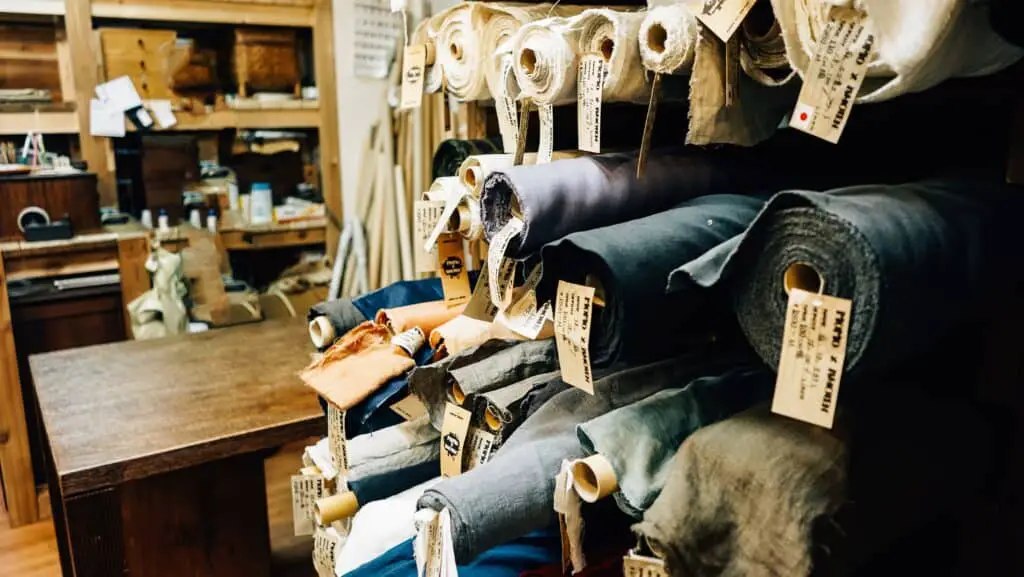
Best fabric for suits in India
Being part Indian, naturally, I feel the need to get into the best fabrics needed for my bois to thrive…over in the East.
The best fabric most suitable for your suit to wear in India is 100% wool, as this fabric high a breathability factor, good moisture-wicking properties, and has good ventilation.
Plainly put, wool is awesome, whether you opt for regular wool, or even level up with a more exotic cut of something like merino fool fabric.
As merino wool does everything that regular wool does, and more – such as trapping odors within the crimps of its fibers and even being versatile enough to keep you warm and cold in a multitude of weather types.
For a more in-depth look at the all-around awesome capabilities of merino wool, check out this other post we wrote on it right here.

Suit construction and why it matters as well
I feel the need to go over suit construction as most first-time (inexperienced) suit buyers will often focus on fabrics – when you must also consider the actual “construction” of your suit, as that matters just as much.
Below we’ll go over what suit construction actually means, and how it relates to everything else – including the price.
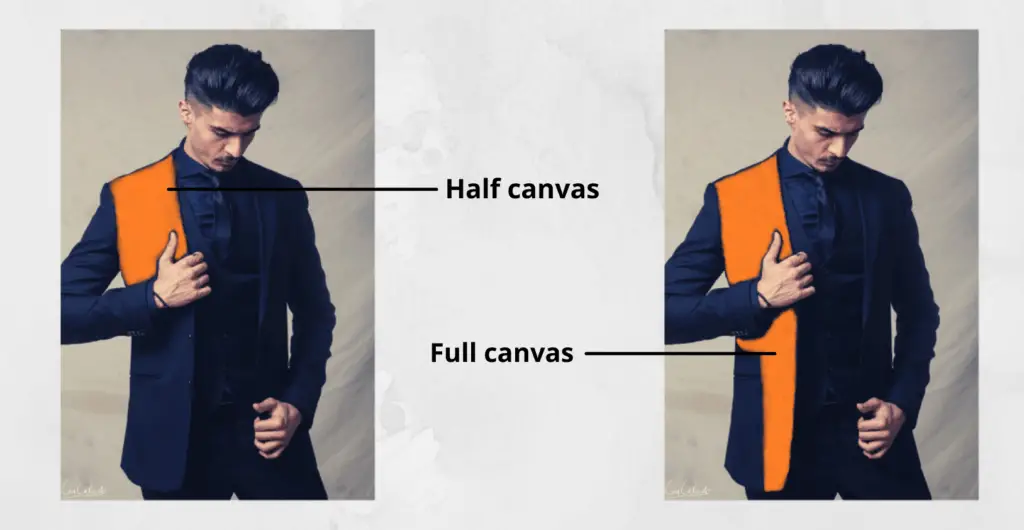
What is suit construction?
Suit construction is the actual stitching of the canvas fabric that essentially gives the suit jacket support for its shape, much like a skeleton.
The canvas acts as a frame that extends throughout the front panels and lapels of the jacket.
For fellas looking to spare no expense, it will always be best to opt for full canvas. Otherwise, if you’re looking to cut costs, opt for half canvas in that case over the cheapest alternative: glued interlining
What is full canvas?
A full canvas is one where the interlining is sewn to the fabric, allowing the jacket to ultimately be more flexible, and for it to go and mirror your movements with ease without any such fabric impediment to hold you up.
Full canvas is a layer (made from such things like wool, horsehair etc.) embedded between the suit material on the outside and the lining from within.
Imagine if someone stuck a thin fine piece of cardboard all around the inside of your jacket, allowing it to hold up and retain its shape…that’s basically what full canvas is (without getting into the fine jargon behind it.)
2.) Benefits of full canvas construction
- Allows your suit to be more flexible (as with full canvas, the interlining of your jacket is literally longer than a half canvas, so basically your entire jacket will be “covered”, rather than just “half” of it.)
- Provides more overall comfort
- No pressure points
- The garment actually gets better over time
- Allows you to decide from the get-go as to how much stiffness you want in your jacket.
Cons of full canvas construction
- The process is more time consuming to make, and therefore is more expensive
2.) What is half canvas?
Half the canvas, half the fun… just kidding.
A half-canvas means that half – or rather 1/3 – of your suit’s interior will be “laced” with an interlining chest piece that, in this case, does not extend down to the front panel of your jacket.
This equates to less time spent actually making the wondrous half-canvas interlining, and more time getting it put on your sexy jacket – equating to you paying less, for essentially “less.”
Benefits of half canvas construction
- Cost saving…that’s pretty much it.
To be clear, however…to go the half-canvas route is still a rather admirable choice and one you should not shy away from if you lack the funds to pay a premium for the full canvas option.
With a half canvas, you’re merely getting half of what the best of the best has to offer, at “half” the price – not too shabby.
This is unlike suits merely “glued” or “fused” together, which is the hallmark of a cheap suit – which you should oh for the love god never get.
Pretty please, just don’t.
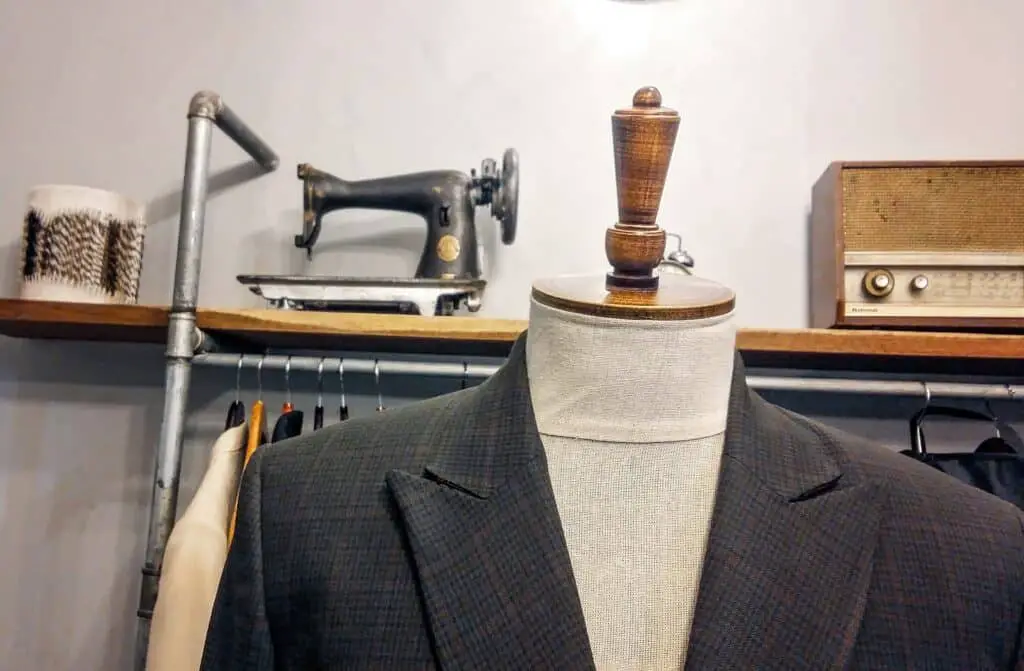
Why glued suits are bad? The problems…
Glued suits are bad due to a myriad of problems. A fused suit is part of the throwaway economy as the resources used in the process must be thrown away. Also, a glued suit is made of nonwoven polymers which-unlike woven textile – will deteriorate at an exponential rate over time.
While it may not seem like it, you likely will end up paying more in the long run by buying a glued/fused suit, as it simply does not last as long as full or even half-canvassed suits.
Would you rather pay $1000 for one suit that will last you possibly decades or 1,000 suits for that price that will last you all of 5 minutes? – (maths was never my strong suit but you get my point.)
While a glued/fused jacket generally gets the same job done, it does so in a much more innefective way. The glued materials will keep the jacket’s shape, sure, however much of it will look unnatrual and stiff looking.
Imagine wearing thick paper – that’s how shoddy a glued it can feel.
Pros & cons…are there any?
Don’t get me wrong, a glued suit can look “fine”, but its more as to how the material will actually feel and react to your daily activities.
Fusing technology has certainly evolved since its inception in the 60’s – and further global implementation from the 80’s onwards – though its not perfect just yet.
Risk of delamination
The problem with fused suits (ones comprised entirely of a glued/fusible interlining) is that you inevitably will run the risk of delamination – where the material itself will fail and separate from one another during processes such as the cleaning of the fabric.
This is why taking your glued suit to the dry cleaners regularly could prove to be a problem. As in the cleaning process, the glue holding the suit together will likely dissolve entirely, forming “bubbles” upon the material itself (caused when the wool or inner material separates from the fusing) – rendering the suit unwearable.
This is a irreversible process.
What about combining glued and canvassed fabrics together?
Just because it seems as though glued suits are now becoming the boogeyman posterchild for everything wrong with suit wearing, don’t be discouraged about “fused suits.”
Here’s the thing.
A half canvas suit is actually partly “fused” if you want to get technical.
A half canvas suit uses a sewn-in canvas piece in the chest and the lapel of the jacket but is fused at the bottom part – so technically there’s some fusing involved, but not nearly enough (lack of quality-wise) to be called a “glued suit”. As half-canvas suits are still a worthy purchase, unlike a fully-fledged glued suit.
This is because a half canvas suit still allows you to have the canvas at the most important part of the suit, which is around the chest piece area – unlike a truly 100% glued suit.
So once again, opt for full, or half canvas, over glued suits entirely.
A brief history of fused suits
Fused suits were created in response to the surge in suit demand that occurred decades ago that was developed to appeal to the mass market (i.e garments made at a better price point…for a cost.)
After a whole lot of messes and “bubbling”, a new compromise was developed: the half canvas suit.
Fused suits are not THE WORST THING since soggy bread, though there’re not a smart investment if you’re someone who needs a reliable garment, and one which will last possibly decades under the right care.
The advent of fused suits has been making strides, and its possible on day that it will prove to be nearly indistinguishable from full and half canvas methods, though that time is not yet.
So until the tech catches up, you really ought to know what you are doing if you go down this route…or just don’t wear it…much.
What is the lifespan of a fused suit?
Like any piece of clothing, whilst there is a maximum length as to how long fabrics can last, its hard to say as it depends on factors like usage frequency and cleaning cycles.
For a fused suit used for daily wear (including the bi-monthly cleaning recommendation for daily use), your suit should last 3-5 years at the low end. The lifespan increases threefold with less usage (3-5 years at the high end with weekly or bi-weekly wear.)
This is why overall it’s better to opt for full or half or half canvas, as for the regular suit wearer – with all these cleanings and wear and tear naturally associated with daily wear – you’re fused suit ain’t gonna last long.
If you want to see my personal recommendations on what things to pick for your suit, check out my resource page right here.
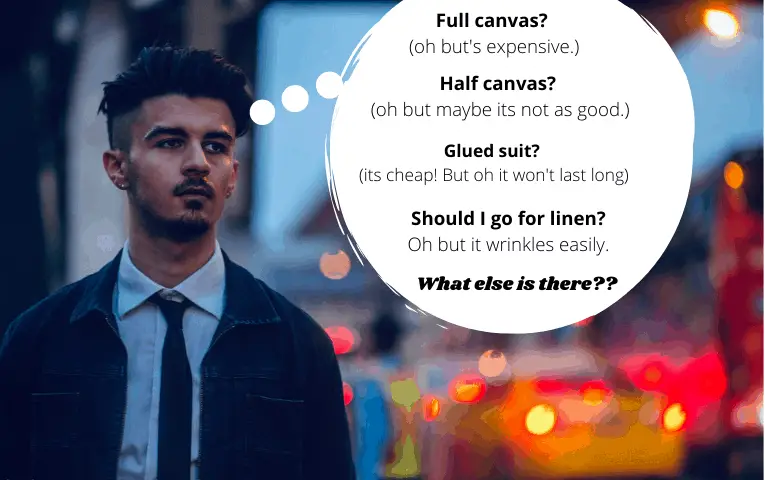
Other factors to consider besides suit material and canvas construction
Aside from canvas description and fabric choices, there are other factors like the fineness of your fabrics (A.K.A. the “super” count), and how to actually use this reference to your advantage.
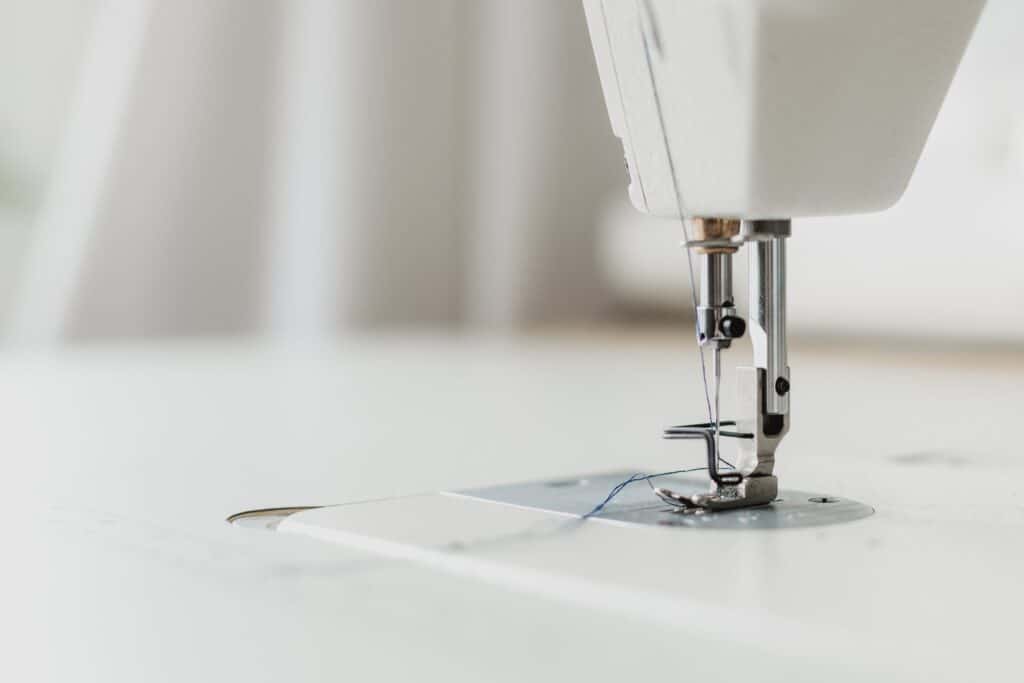
Photo by Matthew Henry from Burst
What is super thread count?
When it comes to fabrics, thread count is known as the “super” number. Basically super count refers to the thickness of the thread. The higher the count, the finer, lighter, and more “awesome” the fabric will be.
But that don’t mean nothing – lemme explain.
There’s no need to choose a fabric with the highest thread counting, as with such a thing like wool “super 180” – its soft as hell, and feels amazing.
But there is a point of diminishing returns, where an exceedingly high yarn count (like 200) would likely be woven with fine fibers so thin that overall structure would end up being much weak as a consequence
More threads = more heat
Also with such a high thread count, this also means the hotter you’ll likely be within the fabric, as so many more threads mean more chances for the air to circulate poorly, as there are simply too many threads crammed in there.
Super thread count guide – and how to actually use it
Okay so jargon aside, below is the breakdown and some rules on what to look out for, so when you see the thread count number, you’ll at least have some idea of what you’re looking at.
- Super 70S-90S: Entry-level durable wool fabrics suited to keep the wearer warm.
- Super 100S-120S: Durable, of great quality, but is thinner, lighter, and most comfortable. Work for a variety of settings.
- Super 120S-130S: Finer qualities, smooth and durable, also borders onto the luxurious thread count. Suited for suits, blazers, everyday occasions.
- Super 130-140S: More fragile, but more “sexy”? I.e. A finer, softer, and lighter feel.
- Super 140S- 160S: Luxurious, made of lightweight textiles, smooth in texture (with thread counts above this reminiscing silk fabrics in texture due to the fineness of the fabrics.) Best for wedding suits, executive business suits, and/or tuxedos.
There are thread counts higher than the above list, with the number exceeding 200, but anything over this will be suited best for special occasions, or for particular individuals – who already have experience in tailored suits – looking to make a needlessly loud (and complex) fashion statement.
Also note that none of this is regulated, so one company’s “super 120” could be another company’s “super 220.” This is more of a marketing ploy that brands use to hype up the fabrics and drive up costs (much like how the higher the megapixel number on a camera doesn’t always equate to it being “better.”)
What it comes down to….
Fella’s, if you want the top line for exclusivity’s sake then that’s different, but if you’re just looking for quality without necessarily spending a fortune, then any super 100 or 120 will be your best bet. This number will ensure that your fabric still remains beautiful, and be more than able to handle your daily wear.
For most people, super 100-120 will be more than apt for your suit.
Don’t overcomplicate it!
What ACTUAL important things to consider when buying a suit
I grew up in the hot & sticky tropics of South East Asia’s (concrete) jungles, and so for us Asian dwellers – due to issues like the weather – there is a myriad of factors to consider when buying a suit.
Overview
- Fabric construction (not “fit”)
It’s not just about the quality of fabrics, but of the type of construction (NOT “fit”) that your suit is made of. Are the materials glued together? Does your budget allow for a canvassed suit jacket over a half canvass frame? Well if you want to stay cooler for longer, then it should be, etc…
Fabric construction matters, people.
- Location and occasion
Are you buying this suit for work? For work in a cold country? A hot one? If you plan to sweat then perhaps you should opt to avoid fully linen fabrics. Or are you buying this with a casual dress sense in mind – or is it for an occasion more formal than a hot date with the Queen?
A suit is not a t-shirt, and costs a lot more than one, so consider where you plan to actually where this first, before you start assembling it all together.
- Fabric fit
Finally, we’re talking about the actual “fit”, and not “construction” (first-time buyers might mix these two up.)
This is to parley from a previous point. Fit is king. So don’t buy any such suit that doesn’t fit you – unless you know that it can for sure be adjusted.
- Fabric quality
Of course, the “A-Lister” star among the perceived “trivial” qualities when it comes to buying a suit – as fabric quality is one everybody knows of, which makes sense.
Fabric quality matters when considering a suit as it’s likely the first thing you’ll notice, see, and feel. The good fabric just lasts longer and overall feels better.
- The shirt to go along with your suit
A suit is a two-piece (minimum) ordeal that demands you bear a conscious effort when purchasing your suit jacket, as you also need to think of the actual shirt that will go along with it.
To have a kitted-out summer lightweight jacket – only to pair it with a heavy twill or an oxford shirt (from Target no less) would negate the painstaking efforts it took to get your suit jacket to be “climate-ready” in the first place.
Don’t be a dummy. Make sure your shirt is on par with whatever witchcraft you’re doing toward your jacket – they both should be on the same page in helping you achieve max output, whether that’s to keep your warm, cool.
They both should be made of materials that correspond to one another and of which work in tandem with whatever your goal is.
- Waistband (matters more than you think)
The waistband is the midway where opting to wear something to keep your trousers hoisted up could result in a disruption towards the flow of a suit – i.e. it’s the one spot where you could f*ck up your perfectly tailored suit.
Plus having a waistband too loose could result in your skin being pulled at the waist (giving you that infamous “pear” look.)
- Legs legs legs people!
It’s all about looking graceful, and that’s exatcly how your trouser pants should break on the shoe. Though you have a few options when it comes to how you’d prefer your trousers to fall upon your shoe.
From no break (neat and straight) to full break trousers (think of your grandaddy’s suit in the 1940’s – that’s a full break pair of trousers.)
Ideally, you want a soft break on the front of the trouser and not the back, the crease should go up a few inches up to the calf area. Shorter trousers these days are more popular, so for guys with slim legs this could be an even better option – you got options.
I recommend always getting an extra pair of trousers with the same fabric made (so 1 suit jacket+2 trousers) as the trousers will usually wear out faster.
Style tip: Consider equipping the second pair with unique “side tabs” (in case you don’t want a belt at times.)
- Single breast or double breast?
You prefer to look like yourself or your grandad? Just kidding. But it truly depends on how formal you want this thing to look. Double-breasted is considered more “dressier” and formal, whilst single-breasted is considered more “casual”, and is better suited especially to hotter climates.
But honestly, 9/10 times you’re better off going for the single breast, ESPECIALLY if this is you’re first suit.
- Color
Buying a quality suit should be an investment, and this only goes so far as you actually liking what you own – so opt for a practical suit color that is versatile in its appearance, that you also like, of course.
Grey is a rather lovely, versatile, and commonly accepted color to work with for people unfamiliar with suits, as there’s an easy-to-follow rule for this color. The darker the skin tone, the lighter the grey color should be, the lighter the person, the darker the grey can be.
A charcoal grey can also tone down the murkier hues of a darker person, making them and their skin tone stand out brilliantly. You have a variety of options to consider.
Style tip: If this is your first custom suit, I highly recommend you go with a simple solid. Navy, charcoal grey, medium grey, etc. For your first suit = go simple.
- Budget
While you sure can, you really shouldn’t…BUY a suit for anything less than north of $1,000. Many pieces for prices below that will liekly skimp on one of the many moving parts that it takes to make a suit.
Whether that’s gluing on the fabrics, skimping over the quality of materials (opting for super 100 micron fabric over super 250 fabric), bad stitching, ill-fitting, shoddy fit (especially if they don’t get it right the first time, you’ll likely have even less luck of them getting it right on the second try.)
Long story short, just expect to spend, a lot – it’s an investment piece, fellas.
If you want to see my personal recommendations on what things to pick for your suit, check out my recourse page right here.
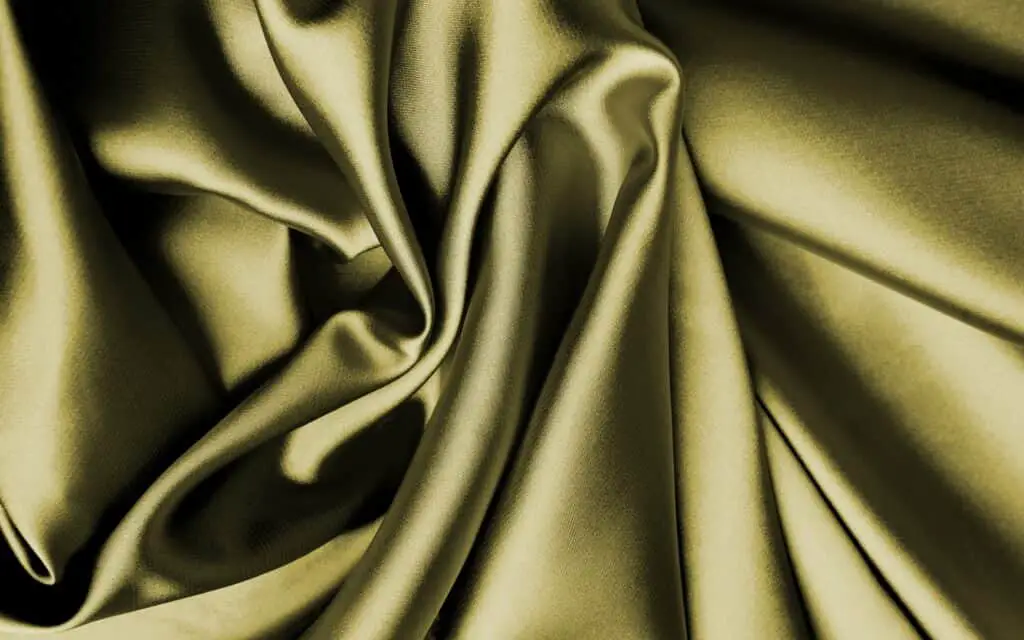
Best suit fabric brands available today
Luckily for us, this isn’t the Dark Ages where you’d need to ride by horse for over a fortnight to find more than one competent tailor – we have some choices.
Below is a list of some of the top brands aside from the usual ones like “Gucci.”
Brunello Cucinelli
You gotta go Italian for the first choice with the “King of Cashmere.” Ethical and sustainable with their approach to the business, expect nothing but the best in the form of old classics in traditional patterns, but with updated innovative details to give the old look a little more “gusto” – with all-natural fabrics, of course.
Who’s it for? Men – A.K.A. Hippies A.K.A Just kidding – who care about the planet and thrive for the “Golden Oldy” look that your daddy’s daddy probably sported back in the day…but with some new-age twists.
Isaia
Napoli “boutonniere” swagger with a traditional contemporary outlook. It’s an all one clothing shop handmade in Italy by tailors with a gazillion years of experience (or might as well be.)
But why Isaia? Well if it ain’t for the hand-cut patterns and quality materials, it’s for the aesthetic and Neopoliatan style that goes with all their suits, even amongst the little things.
Such things like their arduously crafted Neapolitan (Neo) style suit sleeves (slimmer armholes set higher up), traditional Neo slanted “boat-shaped” breast pockets (“taschino a barchetta”), and top-notch lining (encouraging comfortability as well as style) – all created by a loving brand from start to finish.
Who’s it for? Detail-oriented fella’s who love the classic look, but either love the unique Neapolitan look too or just wanna stand out with something a little more uniquely niche.
L.B.M 1911
“Italian Stallion” brand renowned for their excellency in high-end menswear, they got masterfully elegant formal apparel to offer for every occasion.
Jackets, chinos, vests, and of course, suits…for every occasion imaginable.
70’s color palettes and style options is what this “Italian Riviera-esque” brand is known for, along with old traditions and textile innovations, perfect for the relaxed contemporary man.
Who’s it for? If you want the look of a nonchalant style guru who looks like he’s got his shit together, but with “sportswear level” comfortability alongside your look – comparable to that of comfy sportswear – then L.B.M 1911 is for you.
Cifonelli
Well, respected, fashionable…and French. An old dog on the scene since the ’80s (1880’s that is.) A premium producer within the bespoke institution in France, this brand signifies perfection designed to radiate, but with purpose, as well.
Fundamental findings on classic techniques coupled with the founder’s goal of reconciling comfort and shape – or function and form – in the tailored jacket.
Who’s it for? The men who value something more than just “looking pretty”, men who eye to look fashionable with maximum functionality, by a brand that spares no overlooked detail.
Slim fit and close-fitting, but with total freedom and movement – that’s Cifonelli.
Franc Milton
American styled icons is what you’ll come out looking like at this joint. Los Angeles based designers specializing in creating men’s apprel in a variety of styles.
“Masculine luxury” is what Franc Milton is about, being inspired by traditional menswear without being encumbered by the “old ways” of it all.
Who’s it for? Modern yet refined individuals who vie the light “macho” look that Americans are known for. For individuals who yearn for a little attitude in their bespoke menswear, along with some playful rakishness to round out the look – because being a little cheeky is always fun.
Hugo Boss
Of course we couldn’t not include at least one known brand that every young, mature, old, and ancient demogrpahic would’ve heard of at some point before.
Exuding refined elegance and machismo looks, this luxury label has it all, for all types of men. If you want something contemporary that sculps the contours of your body “oh so well” then the “Boss” man is for you – but if you want something else, then they’ll likely still have you covered.
Who’s it for? Men who not charmed by the intricacies of the bespoke world, or who’d prefer to keep things simple and streamlined, by going for a brand that offers varied suits for all occasions and styles.
Suitsupply
New(er) kid on the block, Suit Supply is a banging place and one that I mentioned in a previous article on the top menswear outlets available online.
Suitsupply is less “luxury” and more “commonplace” – in the best possible way. They cut to the chase when it comes to providing affordable “off the rack” options made with quality materials.
Whatever you need (suits, blazers, shirts) they’ll be sure to have it.
Who’s it for? The “no-frills” guy out there who just wants to look dapper in the most affordable way possible, without comprising on quality and overall look.
If you want to see my personal recommendations on what things to pick for your suit, check out my resource page right here.
The Ultimate Mini Suit Checklist – Downloadable Guide
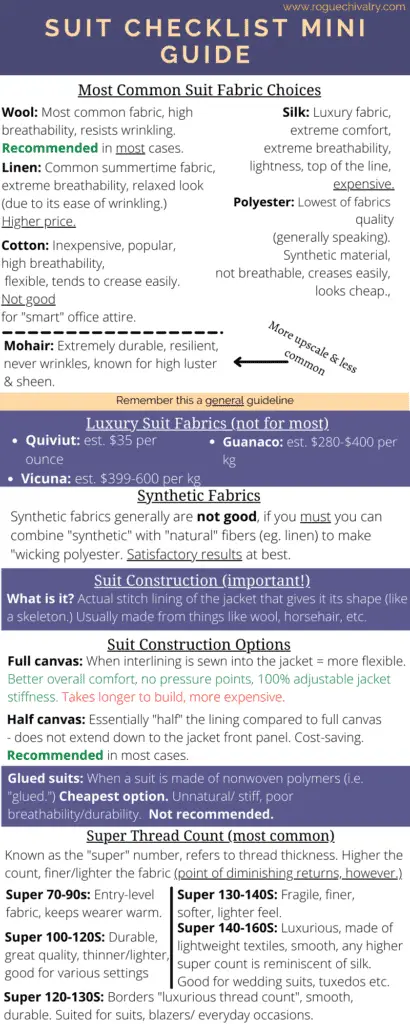
Everything from here on out below is merely created for reference, and as a guide to perhaps teach you more if you are interested in understanding the properties of the cloth you’re buying (and the intricacies surrounding it.)
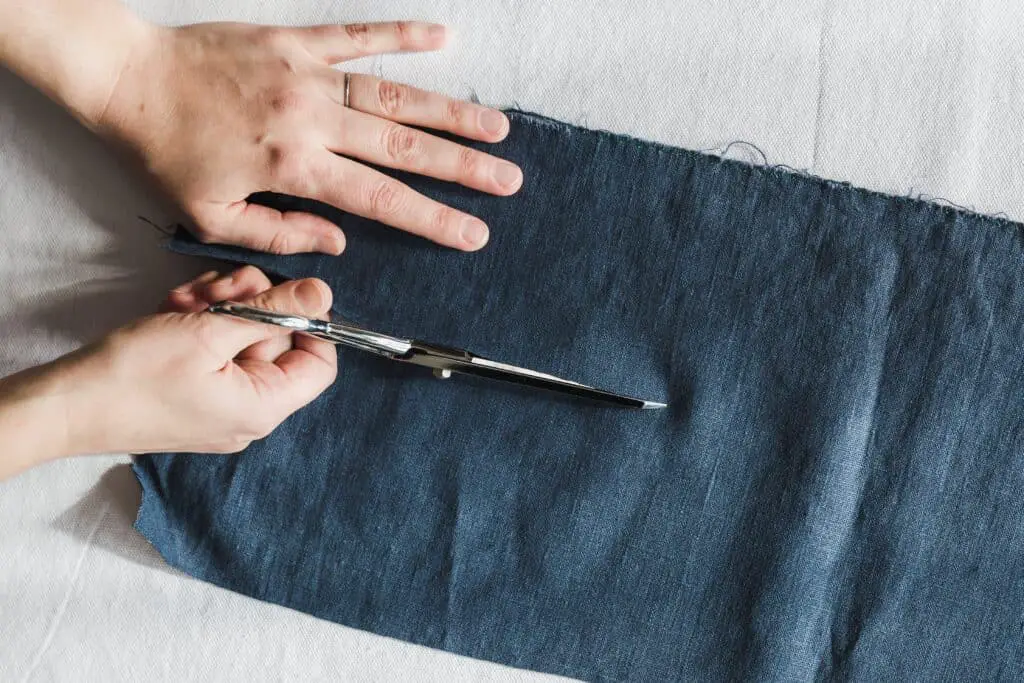
What does weave fabric mean why is it important?
A weave fabric is simply the method of textile production where two sets of yarns and threads are interlaced with one another to form a cloth or fabric.
It’s the specific pattern upon your suit where sh*t is actually laced and pulled together to create solid cloth – to simplify it even more so.
Now to start off with, there are thousands of ways to weave thread (much of which will be useless to you), though there are a few that have become commonplace in modern textiles – but EVEN then we’ll focus on the most common types used for most definitions (so as to not confuse you even more.)
You have 3 common types of weaves:
- Plain weave
- Twill
- Satin
Below we’ll explain what is the difference between these 3 weaves, but before that, let us explain some terminology that will help clear up some jargon that may occur during our breakdown.
Weft and Warp threading = Fabric Weave
Weft and warp is the interlacing of threads, forming the weave of fabric or piece of cloth itself.
Warp and weft are two of the basic components used in weaving to turn thread or yarn into fabric. The weft is the horizontal lengthwise thread that acts as the frame of the cloth whilst the warp is the vertical thread that is drawn through and inserted “over and under” the warp.
What the hell do I mean exactly? Check out my example below.
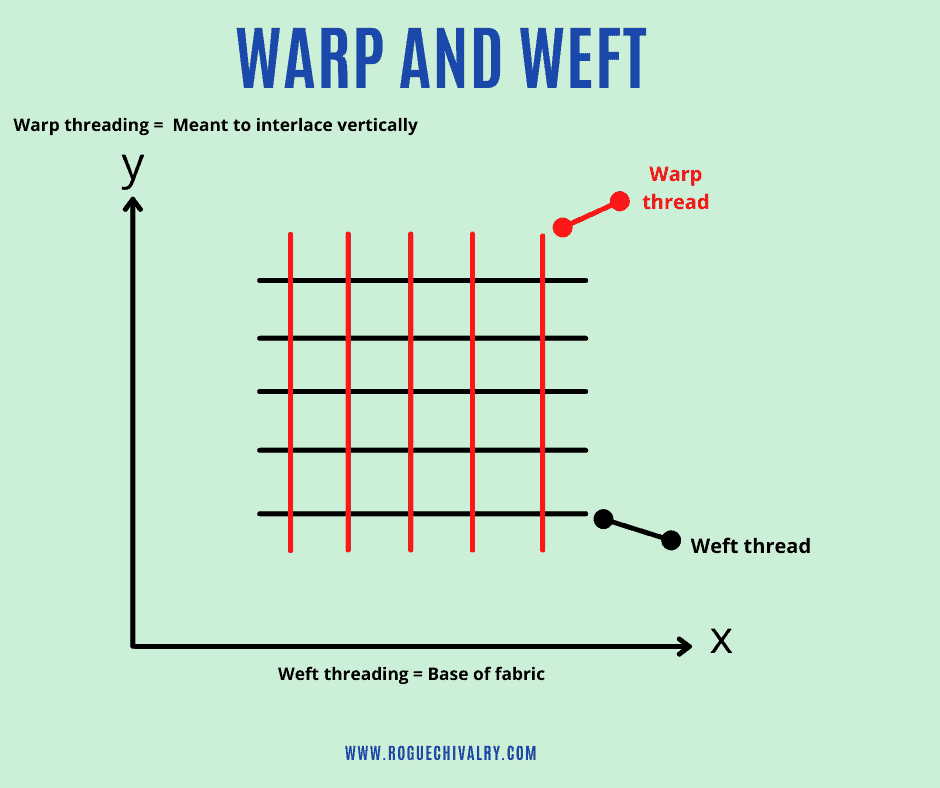
Imagine a piece of cloth as an “XY chart”, the weft is part of the “x axis” (horizontal) which acts as the “base” to hold the frame of the cloth, whilst the warp functions on the “y axis” (vertical) meant to interlace “vertically” through the framework set up by the “x axis”, or more specially the “warp thread.”
What is Plain weave?
Plain weave is the most basic type of weave out of 3 fundamental types of textile weaves (along with satin weave and twill.)
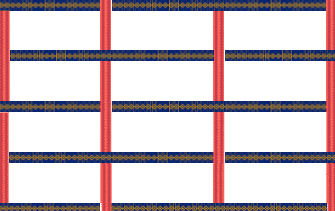
Each horizontal weft (A.K.A. the “frame”) is interlaced with each vertical warp thread by going “over” (the first string) and “under” the second, and so on, etc.
Due to its rigorous interlacing plain weave is the most versatile and solid out of the 3 weave most common weave constructions. Though type of weave is less absorbent than other weaves, and doesn’t fray as easily as others (good if you have a “paw-happy’ cat in the house.)
What is twill weave?
Twill fabric is characterized by its diagonal appearance (or diagonal lines) created when the warp (vertical) is stretched over and under two or more weft (horizontal) threads.
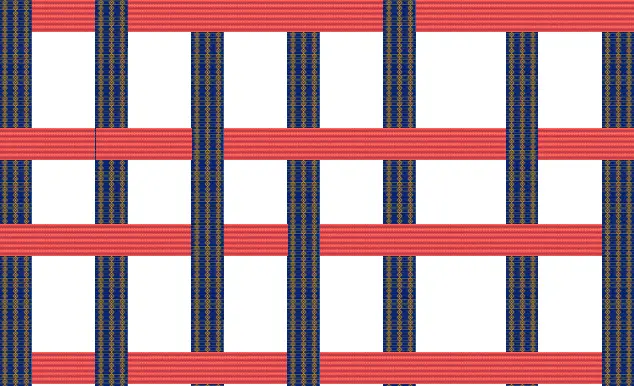
This weave has great versatility and is highly durable, with the coolest part being due to its thickness, it better hides stains than that of plain weave. (and is also used for jeans, chinos, bags etc.)
*The most common of twill weaving is the 2-by-2 twill weave (when two warp (vertical) threads go over and under two wefts (horizontal) threads at one time.*
What is Satin weave?
Satin weave styling can be evident by the weft (horizontal) threading allowing to pass over multiple yarn threads.
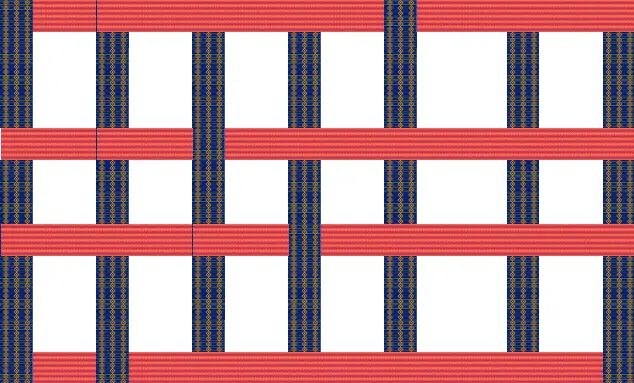
The patterning resembles this thread style (satin weave being represented by the horizontal line): –|—-|-|-|-|–|–|—|-|—–|–
This weave creates a very smooth face along with a rough back, and have soft handlings and top notch drape.
Satin weave also has a higher cost per yarn count, as it is thicker and denser than plain twill weave.
If you want to see my personal recommendations on what things to pick for your suit, check out my recourse page right here.
Top 3 Basic Weave Fabrics – PDF Guide
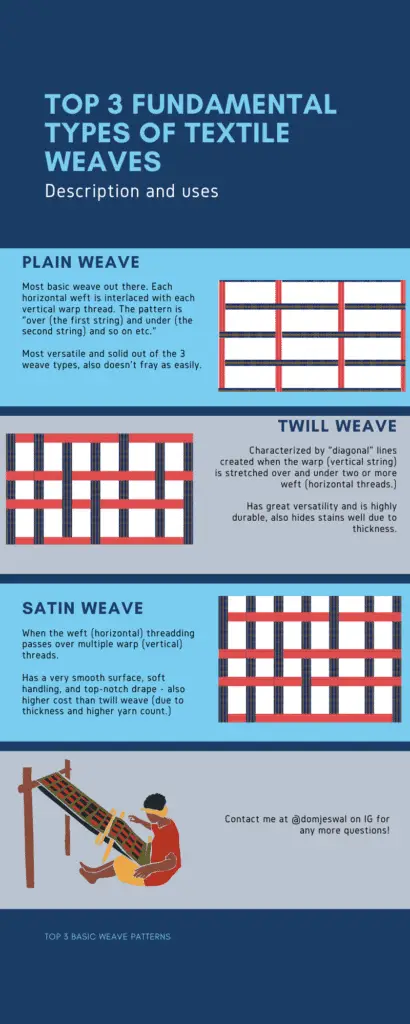
Here is a downloadable guide incase you’re curious!
The Takeaway
Find a repuatable tailor, one who you trust, and one who has good communication skills (this last part cannot be understated.) This list is not meant to be a “DIY Manual” where you’ll get sh*t made by simply barking orders at the tailor..don’t do that.
Suit making is a collaborative process, so find a good tailor who understands people well, is articulate, and reliable, and use this list as a guide to bounce off of ideas with your tailor.
“What have you got to lose, that you haven’t already lost?”
-The Boys (tv show)
You have nothing to lose other than what you’ve already lost by not treating yourself to a garb that – when crafted right – will echo your style, personality, and swagger, to heights beyond your comprehension.
Plus they’re so many ways to “skin a cat” at this point, so no matter your budget, location, or anything else…you really have no excuse.
Profuse your style and manner in the best of ways through the use of “enclothed cognition” to alter and amplify your sensory functions, in matters of confidence and attention.
Stay Rogue.

